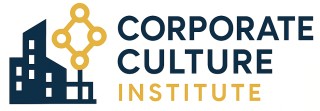
The Early Days of Applicant Tracking Systems
The Evolutionary Path to Digital Recruitment Solutions
The inception of applicant tracking systems (ATS) marked a significant milestone in the recruitment landscape. In the early days, the goal of ATS software was to streamline the hiring process by automating various tasks that were previously performed manually. This included the collection of resumes, tracking of applicants, and simplification of communication between candidates and recruiters.
The initial systems were basic, primarily focusing on resume parsing and data management to ease the workload for recruitment teams. These early ATS platforms operated as simple repositories where job applications were stored and managed. Despite their limitations in functionality, they were revolutionary at the time, laying the groundwork for the sophisticated recruitment software we see today.
While the early ATS approaches provided fundamental solutions for tracking job applications, the systems were not without flaws. A significant challenge was the limited ability to improve candidate experience or aid recruiters in identifying qualified candidates efficiently. As recruitment needs grew more complex, the demand for more robust systems became evident.
With advancements in technology, modern ATS solutions have evolved to meet these needs, integrating functionalities such as deep data analysis and artificial intelligence to enhance the recruitment process. For organizations aiming to attract top talent, it's essential to understand how these systems have transformed over time. The initial groundwork was instrumental in charting a path towards more efficient and data-driven recruitment methodologies. For organizations looking to improve their hiring process, understanding these early systems can provide valuable insights into implementing effective strategies today (source: implementing effective strategies).
Technological Advancements in ATS
Revolutionizing the Recruitment Landscape
The evolution of applicant tracking systems (ATS) in recent years has profoundly impacted the recruitment process. Modern ATS platforms incorporate advanced technologies, reshaping the way organizations manage their hiring procedures. A significant technological leap is the integration of artificial intelligence, which streamlines the resume parsing process, automatically filtering through numerous applications to identify qualified candidates. This ensures that recruiters can focus on top talent, saving time and resources.
ATS software has become more intuitive and data driven, providing valuable insights into recruitment metrics. These insights enable talent acquisition teams to make informed decisions and optimize their strategies for better candidate experience. By using sophisticated data analytics, companies gain a comprehensive view of the hiring process, from initial candidate engagement to final selection.
Furthermore, the rise of social media and job boards has been seamlessly integrated into these tracking systems, broadening the scope of candidate reach. This connectivity enhances the recruitment process by allowing ATS solutions to cast a wider net for potential candidates across various platforms. The result is an efficient recruitment ecosystem that not only expedites the hiring process but also improves the overall experience for both applicants and recruiters.
For more insights on how strategic compensation impacts corporate culture and recruitment strategies, explore our detailed discussion on unlocking the potential of strategic compensation.
Impact on Corporate Culture
Shaping the Dynamics of Corporate Culture
The integration of applicant tracking systems into the hiring process has significantly influenced corporate culture. With the utilization of ats platforms, companies experience a shift towards data-driven decision-making. This shift allows recruitment teams to utilize information from various sources, such as job boards and social media, to enhance the recruitment process and identify qualified candidates.
ATS solutions streamline the tracking of applicants, which facilitates a more efficient and organized approach to talent acquisition. This organizational enhancement not only speeds up the hiring process but also supports recruiters in locating top talent in a timely manner. As a result, the focus can shift from administrative tasks to strategic planning and fostering a supportive company environment.
Furthermore, the implementation of modern ats platforms affects the candidate experience. By simplifying processes such as resume parsing and application management, candidates encounter a more seamless experience that reflects positively on the company's image. It creates an atmosphere where potential employees feel valued and appreciated, crucial components of a healthy corporate culture.
However, with the growing reliance on tracking systems, there is a rising concern regarding the understanding of hostile work environments. While ATS software can transform recruitment practices, firms must remain vigilant to not reduce human interaction to mere data points, maintaining a balance between technology and personal connection.
In essence, the integration of ats systems into the hiring landscape has the potential to cultivate positive corporate cultures by reducing time spent on menial tasks and allowing recruiters to focus on what truly matters: finding the right fit for the team and nurturing a supportive workplace environment.
Challenges and Criticisms
Navigating the Limitations and Obstacles
Applicant Tracking Systems (ATS), while incredibly beneficial in many respects, are not without their challenges and criticisms. One major challenge is the potential for bias. Though ATS platforms are designed to streamline the recruitment process, they often rely heavily on resume parsing and keyword scanning. This means candidates who may not have the exact keywords or formatting that the system recognizes can be inadvertently overlooked, reducing the pool of qualified candidates who reach the recruiter’s desk. Additionally, this reliance on data-driven approaches can inadvertently foster an over-reliance on automation at the expense of a human touch. Another concern is the candidate experience. A modern ATS aims to enhance the recruitment process, but it's crucial to ensure that candidates do not feel like they are merely data points in a tracking system. If a system is too impersonal or cumbersome, it can negatively impact the overall perception of the company as a potential employer. Moreover, implementing these systems can require significant time and resources. Choosing the right ATS solutions tailored to a company’s specific needs is critical to achieving a seamless integration. Misalignment between the ATS software and the existing recruitment process can lead to inefficiencies, thereby lengthening the hiring process instead of shortening it. While these systems revolutionize talent acquisition by utilizing artificial intelligence and social media integration, they also necessitate ongoing updates and management. Technological advancements within ATS solutions can sometimes outpace the ability of recruiters to adapt, leading to underutilization of the full suite of features available. In summary, while ATS systems present several challenges, awareness and proactive management can help companies mitigate such issues, allowing them to focus on identifying and securing top talent effectively.Future Trends in Applicant Tracking Systems
Looking Ahead: Innovations and Opportunities in ATS
As the field of recruitment continues to evolve, applicant tracking systems (ATS) are on the brink of exciting advancements that promise to redefine the hiring process. With the rise of artificial intelligence and data-driven insights, ATS solutions are expected to become even more sophisticated and impactful.- Artificial Intelligence Integration: Modern ATS platforms are increasingly utilizing AI to enhance candidate experience and talent acquisition processes. By implementing AI-driven resume parsing and advanced data analytics, recruiters can streamline their efforts to identify qualified candidates more efficiently.
- Enhanced Candidate Experience: Future developments in ATS software are set to focus on improving how candidates interact with the recruitment process. By offering more intuitive and user-friendly interfaces, job applicants will find it easier to navigate the hiring journey, ultimately improving their perception of the employer.
- Social Media and Job Boards: Integration with social media platforms and job boards will continue to play a pivotal role in ATS systems. This allows recruiters to broaden their search for top talent by reaching wider audiences and engaging with candidates across different channels.
- Data-Driven Decision Making: As ATS solutions become more sophisticated, the ability to harness data for strategic hiring decisions will become increasingly valuable. This means organizations can better predict hiring needs, optimize their recruitment processes, and enhance overall talent management strategies.
Best Practices for Implementing ATS
Optimizing ATS Implementation for Success
When implementing an Applicant Tracking System (ATS), companies should focus on best practices that streamline the recruitment process and bolster the candidate experience. Here are key strategies:- Define Clear Objectives: Before deploying the ATS, it is essential to establish clear objectives with measurable outcomes. Understand what the system should achieve, whether it's improving time-to-hire, enhancing data management, or identifying qualified candidates more effectively.
- Tailor the System to Company Needs: Choose an ATS software that aligns with your organization’s unique needs and goals. Adaptability is key, as the system should seamlessly integrate with existing recruitment process workflows and business structures. Systems ATS offer customizable solutions that can be fine-tuned to meet diverse requirements.
- Data-Driven Decision Making: Leverage the ATS platforms' data capabilities. Utilize the metrics and insights derived from these tools to refine recruitment strategies, focusing on sourcing top talent and improving the overall hiring process.
- Training and Support for Recruiters: Comprehensive training for recruiters ensures that they maximize the potential of ATS solutions. This preparation enables them to navigate the systems efficiently, utilize features such as resume parsing, and ultimately improve the hiring process.
- Enhance Candidate Experience: A modern ATS should not only streamline the recruitment process for employers but also enhance the candidate experience. Ensure the system includes intuitive features such as user-friendly application processes and timely communication with applicants—factors crucial in attracting and retaining top talent.
- Stay Current with Technological Advances: Keeping up-to-date with technological advancements in ATS, such as artificial intelligence and social media integration, will maintain competitive recruitment capabilities. Regularly updating features and functionalities helps in remaining at the forefront of talent acquisition processes.












